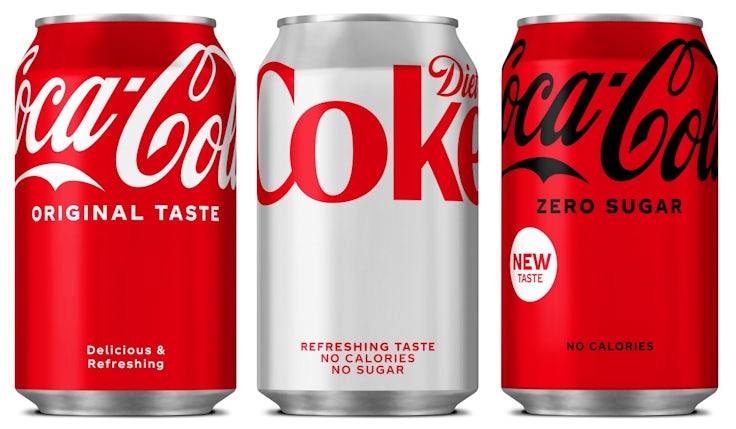Why not changing can be the most effective move a marketer makes
The desire to tinker is deep seated among marketers but what works is often staring them in the face.

With the recent passing of Tina Turner we lost one of the most talented singers ever. If I asked you which of her songs comes to mind first I am sure a sizeable number would reply, ‘(Simply) The Best’, released 21 August 1989 in the UK. It is the most streamed of all her hits here with more than 100 million listens on Spotify.
I am fairly sure none of you said ‘I Don’t Wanna Lose You’, which was her next single, released later that year. By any measure it did very well and is the 12th most streamed of her songs but it’s simply not her best.
Now imagine if following up ‘The Best’ she got rather bored of the song and stopped playing it at her concerts, didn’t mention it in interviews and asked radio stations to play her less well known hits instead.
That would be a rather odd thing to do, wouldn’t it?
And yet that is what most of us in marketing do every year. We get bored of our own work just when it might be starting to reach hit-making potential.
Earlier in my career, I was leading one of the UK’s most popular soft drink brands, Ribena, as we approached a major formulation change. The brand had a track record of generating headlines for the most minor changes. It’s fair to say this was the biggest challenge the brand had faced for some time.
The team had worked hard on a new campaign idea to coincide with the reformulation and despite months of work it somehow didn’t feel right. Time was running out before we were due to launch so I made the team a very simple offer. We would let the data decide if the new idea was good enough. If it tested better than last year’s campaign, we would go for it.
Even I wasn’t ready for the result.
Not only was the prior year’s campaign better than the idea we were developing it was actually the highest scoring campaign ever tested by System1 in the category. In fact not only that but the Ribena berries, the brand’s most distinctive asset, appeared to be the fifth strongest they had ever seen.
.We had a hit on our hands and didn’t even know it.
Only 15% of brand assets are ‘truly distinctive’, study finds
The response to the scores, however, was mixed. On the one hand, genuine delight. But the question asked straight away was ‘what are were going to tell the customers who had been promised a new campaign?’. I suggested we could tell them we were running the most effective campaign of the year and they should stock up in anticipation. We could also use the money saved on agency fees and production to reinvest in media to drive even more awareness and in-store activity.
The plan worked and Ribena achieved a four-year market share peak despite the introduction of a new formulation. We successfully navigated a highly sensitive change by leveraging what we knew would be a successful campaign.
As if to prove my point Ribena recently celebrated its 85th anniversary by re-running an iconic campaign last aired in 2014 featuring the same famous berries. That’s a smart move given the ad has 4.6 star rating and will be instantly familiar to the audience.
Sometimes the best new campaign you can run is an old one.
Data from System1 also shows that far from ‘wearing out’ the majority of good creative actually ‘wears in’. Take the iconic ‘Holidays are coming’ campaign from Coke. That has been running for 25 years and in that time the ‘Star’ score has increased from 3.8 to a consistent 5-star performer.
I am sure many a marketer has suggested it’s time for change. It turns out that familiarity, far from creating contempt, drives contentment.
So why don’t we see more use of long-running successful campaigns?
‘Don’t be afraid of consistency’: Marketers on the driving factors behind effective advertising
The ‘not invented here’ problem
How many times have you seen a new brand team launch something not as good as before? It happens all the time. The feeling that you can improve on what came before is deep seated. In my case I wasn’t aware just how good the previous campaign had been because it was created before my time on the brand.
Your first job as a marketer should be to understand what has gone before and what works and doesn’t work. What assets does the brand have that can be leveraged? Why risk a major change when you can use what you already know works?
There is often a powerful business case for not changing, however unfashionable that might be.
It takes quite a strong marketer to leave their ego at the door and objectively understand what works for a brand but it’s what makes you successful.
On my Uncensored CMO podcast I have interviewed successful CMOs like Meg Farren at KFC, Mark Evans at Direct Line and Dom Dwight of Yorkshire Tea. What unites them all is how much they haven’t changed. They understood what worked and stuck at it, buying themselves the freedom to keep making hits.
That’s what makes them simply the best.
It’s why not changing is simply the best thing for you too.
Jon Evans is chief customer officer at System1 Group.







Comments